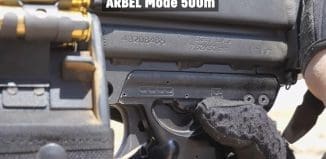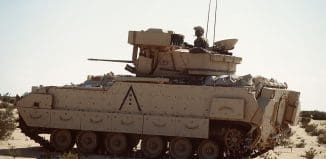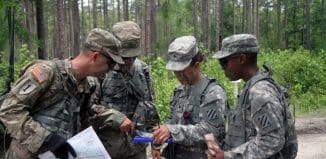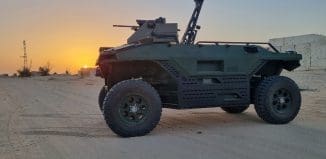State of The Art Targeting Tech to Enhance Soldiers Capabilities
This post is also available in:  עברית (Hebrew)
עברית (Hebrew)
The US Army recently demonstrated a breakthrough in soldier weapons targeting. The development features a tiny, weapon-mounted thermal sight designed to communicate wirelessly with the service’s latest Enhanced Night Vision Goggle (ENVG). By pressing a button on the side of an M4 carbine, soldiers can wirelessly transmit the site reticle of the Family of Weapon Sights-Individual (FWS-I) into the wide display screen of the helmet-mounted Enhanced Night Vision Goggle III and quickly fire at enemy targets.
“This is the first time that we’ve deliberately taken a weapon-mounted targeting sensor and integrated it with a helmet-mounted mobility sensor to provide that rapid target acquisition capability,” Dean Kissinger, electronics engineer for Soldier Maneuver Sensors told kitup.com.
Currently, most soldiers use basic night-vision PVS-14, which takes ambient light from the stars and the moon. However, the ENVG technology consists of a traditional infrared image. The system fuses the infra-red (IR) with the thermal capability into one display. Soldiers can choose between IR and thermal, or use both at the same time for an extremely effective tool for spotting the enemy at night or during the day in obscured conditions, such as smoke, fog and sandstorms, Army officials said.
“Not only can I see someone pop out, but I can rapidly engage him since I don’t have to scan with my narrow field of view,” Kissinger said. The Army began fielding the first generation of the ENVG in 2009 and has since fielded about 20,000 of the slightly improved ENVG II.
“The full weapon sight mode, you only see the weapon sight itself,” said Maj. Kevin Smith, assistant product manager for Soldier Maneuver Sensors. Rapid target acquisition mode is used to view multiple targets, taking advantage of the wide, 40-degree field of view, he said.
The Army plans to begin fielding the ENVG III in the third quarter of fiscal 2018 and the FWS-I in the second quarter of fiscal 2019. BAE Systems and DRS are the prime contractors and will manufacture both systems, Army officials said.
The service plans to field 36,000 FWS-Is and 64,000 ENGV IIIs to squad leaders and team leaders in infantry brigade combat teams, as well as to Army Special Operations Command, officials said. The Marine Corps is also interested in purchasing the FWS-I, they added.
Army officials have conducted several reliability tests on the two systems, as well as tests to ensure they can operate in an electronic warfare environment.
“That’s a big area of concern right now,” Kissinger said, describing the work that has been done with the Army Research Lab’s Survivability and Lethality Analysis Directorate.
“They are the experts in terms of testing against [electromagnetic] types of threats. We try to intentionally break it,” he said. “We come up with ways of attempting to jam or disrupt it that an adversary probably wouldn’t have the knowledge to go into that. We have had good success so far with the wireless technology and waveform that we are using.”





























